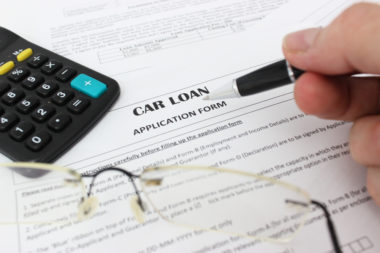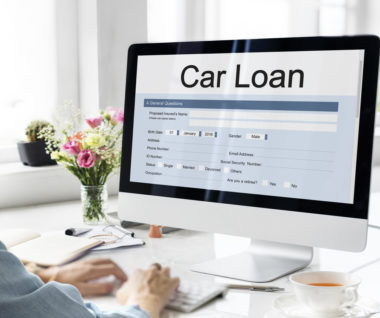Unless you attend college in an area with plenty of reliable public transportation options, getting around off campus can be a challenge. Without transportation, your options for jobs, internships, and even just traveling home for a visit are limited.
The solution — buying a car — seems simple, but it’s often easier said than done. College students typically face challenges in qualifying for an auto loan, and when they do, the interest rates aren’t always competitive. That doesn’t mean you can’t get a car loan, but knowing what to expect beforehand and exploring all of your options can make the process easier.
Table of Contents
Challenges of Getting a Good Car Loan as a Student
The problem for college students applying for vehicle financing isn’t necessarily that they have a bad credit history, it’s that they don’t have any credit history at all, or the history they do have isn’t long enough to adequately demonstrate their responsibility. In view of many students’ unpredictable or limited incomes, lenders are reluctant to take risks by lending to student borrowers.
Again, that doesn’t mean that no one will lend you money for your vehicle purchase. It does, however, mean that the loans you are offered are likely to be less attractive than what someone with a steady job and long credit history might receive. Two challenges that students typically face include restrictive loan terms and poor interest rates.
Restrictive Loan Terms
Because college students present a bigger risk, lenders typically try to reduce their risk by placing restrictions on the loans they’ll issue. For example, the bank may cap the maximum amount of money you can borrow at a fairly low amount (such as $20,000), limiting the selection of vehicles you can choose from.
Poor Interest Rates
Without a solid credit history to drive up your credit score, you aren’t likely to qualify for the best interest rates. In fact, some lenders consider college students to be subprime borrowers, and charge them exorbitantly high interest rates.
The average new car loan interest rate for people with excellent credit (a score of 750 or higher) is 4.98%. For those with scores in the 450 to 699 range, the average rate jumps to anywhere from 11.69% to 17.08%. If your score is less than 450, you can expect to pay an average of 18% interest on your new vehicle purchase.
These higher interest rates significantly increase both your monthly payments and the total amount you pay for the vehicle. For example, if you borrow $25,000 at 4.89% interest for 60 months, your monthly payments will be $470.52, and you’ll pay $3,231.29 in interest over the life of the loan. The same vehicle at 18% interest, though, means a payment of $634.84, and $13,090.05 in interest over five years. That’s more than half the original price of the car — and doesn’t even account for the sales tax, registration, insurance, and other costs associated with car ownership.
How to Qualify for Car Financing as a Student
Although car loans for college students can be expensive, you aren’t out of luck. There are ways to improve your chances of getting an affordable loan.
Have Someone Cosign the Loan
When you have a cosigner on your loan, it means that someone else (such as a parent) who has a stronger credit history is vouching for you and your ability to repay. The co-signer is also taking on the responsibility of paying your loan if you default. This is usually the best way to qualify for a loan, and will often result in a lower interest rate. It also means that you need to be absolutely sure that you can make the payments, because not paying your loan back on time will tank your credit and your cosigner’s.
Improve Your Credit
Building a strong credit history will help lenders look more favorably on your loan application. If you already have credit cards, continue paying them on time and focus on paying down balances if you have them. Increasing the amount of available credit and reducing your utilization will drive up your score quickly. Therefore, if you have low credit limits and a positive payment history, it won’t hurt to request credit limit increases to bump up your score.
If you don’t have any credit cards, now is the time to open an account so you can begin building a positive history. Using the card responsibly and paying your balance in full every month adds points to your credit score. If you don’t qualify for a regular credit card, consider applying for store credit cards, which are more likely to approve applicants with low credit scores. Don’t spend money that you wouldn’t otherwise, and pay the balance in full to avoid getting hit by high interest rates.
Save Money for a Down Payment
The bigger your down payment, the less you have to borrow, so save as much as you can before applying for a car loan. A down payment reduces your monthly payments and in some cases your interest rate, so even if the lender offers 100% financing, it’s smart to make a down payment and borrow less.
Ideally, you should aim to save 5% to 10% of the car’s price for a downpayment. On a $20,000 vehicle, that’s $1,000 to $2,000. To make savings easier, put aside a percentage of every paycheck toward the vehicle purchase. Commit to saving cash by cutting expenses where you can (do you really need all of those streaming subscriptions?) or taking on a side hustle.
Tips for Comparing Student Car Loan Lenders
To get the best deal on your auto loan, take time to compare lenders and offers. You might be surprised at the variations in loan interest rates and discounts you can score.
Explore Auto Insurance Discounts for Good Grades
Lenders and insurance carriers often reward students for their academic performance with discounts on cars and insurance rates. Demonstrating that you have the responsibility and commitment necessary to achieve a high GPA may tip the scales in your favor when you don’t have an established credit history.
For example, Ford, Toyota, and Honda offer a $500 discount for college students when they finance through their credit services, while Hyundai offers a $400 discount and up to $900 in student loan repayments for qualified buyers. Nissan offers up to $1,000 off the purchase of a car.
Find the Best Interest Rate
Before agreeing to any loan, compare rates from different lenders. Use an online tool to compare how much you’ll spend in interest and your potential monthly payments with different loan offers. Remember that the lowest monthly payment isn’t always the best deal, as longer loan repayment periods equal more interest paid over the life of the loan.
Consider Alternative Modes of Transportation
If buying a vehicle just isn’t feasible right now, that doesn’t mean you’re stuck on campus. While you save money to put toward a down payment, use these free or cheap modes of transportation instead.
- Public transportation: Find out if you can get free or discounted passes through your school.
- Bicycle: Invest in a bike and ride to class or work. You’ll get exercise and help the planet!
- Use ride sharing: Uber and Lyft are affordable options for occasional trips.
- Use car sharing: Services like Zipcar offer cheap car rentals when you need them. If you only need a vehicle for occasional trips home or to run errands, it may be a more cost-effective option than paying for a car you’ll park for most of the week, especially if you split the cost with friends.
Image Source: https://depositphotos.com/





